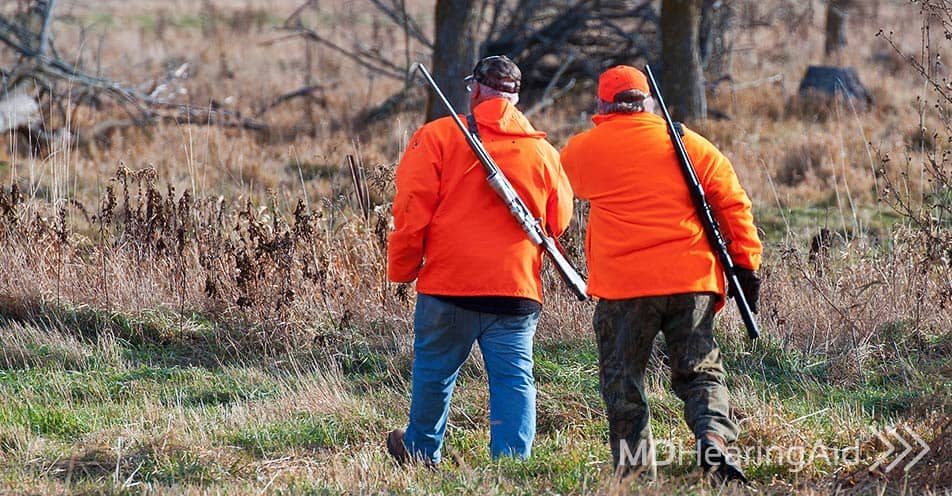Hunting season is in full swing, which means many people will be spending their spare time bundled up in camo and stationed in the woods, hoping to bring home some fresh meat. With the long periods of quiet and tranquility, it’s easy to forget that hunting can actually damage your hearing. Preparing your hunting ear protection ahead of time will help you avoid unnecessary hearing loss while enjoying the great outdoors.
Firearms and Hearing Loss
When many people thinking of hearing loss causes, their first thought is aging or loud environments like rock concerts or construction sites. Yes, hearing damage can be caused by long term exposure to sounds louder than 85 decibels, but it’s noises greater than 125 dB that can cause instant damage.
Unfortunately for hunters, almost all gunshots are over the 140 dB level. According to the American Speech-Language-Hearing Association (ASHA), even a small .22-caliber rifle can produce noise around 140 dB, while big-bore rifles and pistols can produce sound over 175 dB. All of these types of firearms can cause permanent damage with just one shot. Regardless of decibels, shooting a gun in an enclosed space (like a hunting blind) can also increase the risk of hearing loss because the gunshot sound reverberates.
Researchers at the University of Wisconsin proved how prevalent the problem of hearing loss is among hunters. The study found that those who hunted on a regular basis were much more likely to experience high-frequency hearing loss. Even more alarming, 95 percent of the hunters said they did not wearing hunting ear protection at all in the past year. Make sure to have your hearing checked at least once every three years, or sooner if you notice a problem.
Hunting Ear Protection From Firearm Noise
It’s extremely important to use hearing protection while firing a rifle. If you don’t, you can suffer severe hearing loss with just one shot, and once your hearing is gone, it’s gone for good. Hearing loss cannot be restored, only assisted with hearing aids.
Passive and Active Hunting Hearing Protection
There are two main types of hearing protection devices (HPDs): passive and active.
Passive hearing protection muffles noise and reduces the decibel level. This hunting ear protection includes earplugs and non-electronic earmuffs. They tend to be relatively inexpensive and easy to replace, but they also work a little too well and muffle all surrounding noises.
Active hearing protection, also known as electronic hearing protection, allows you to better communicate with your fellow hunters and listen for the rustle of an approaching animal. These devices (often found in the form of ear muffs) make softer sounds louder, but then screen out loud noises, including gunfire. By giving you better awareness of other hunters and your surroundings, active hearing protection can also help your group avoid shooting accidents. Some can also be used on top of hearing aids.
Because they are electronic, active hearing protection devices are more expensive than passive hearing protection devices. Consider them an investment, especially for the hunter who will be going out throughout the whole season. If you don’t want to commit to active hearing protection, it’s important to still bring non-electronic earmuffs or earplugs. Your hearing should always be protected when you go hunting. If you follow hunting ear protection rules now, you’ll be able to enjoy the sounds of nature for years to come.
You know that annoying ringing in your ears? It’s called tinnitus and it can be a sign of early hearing loss.
LEARN MORE

